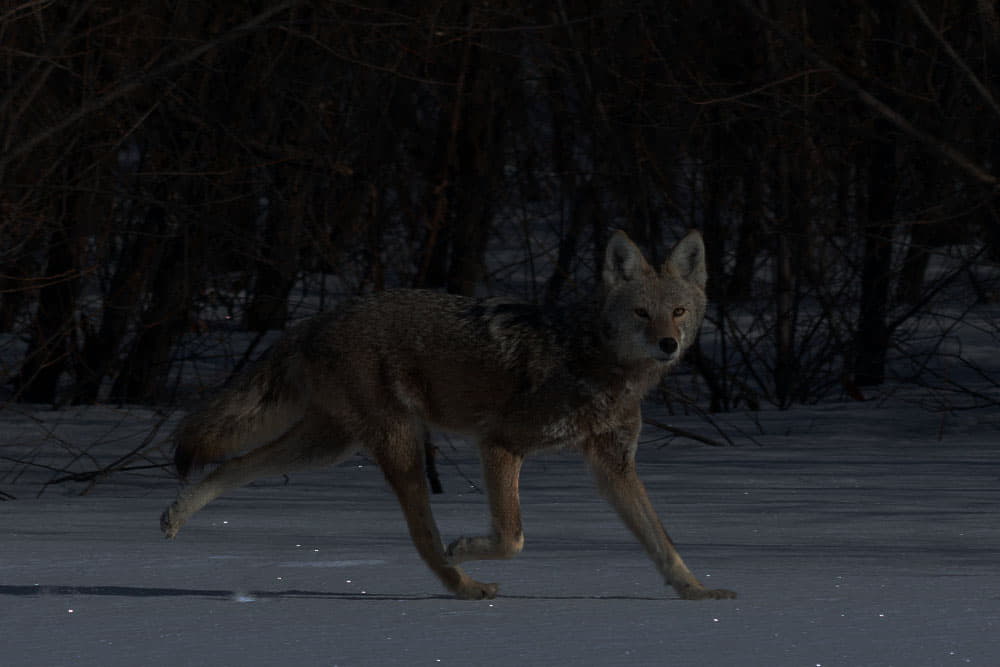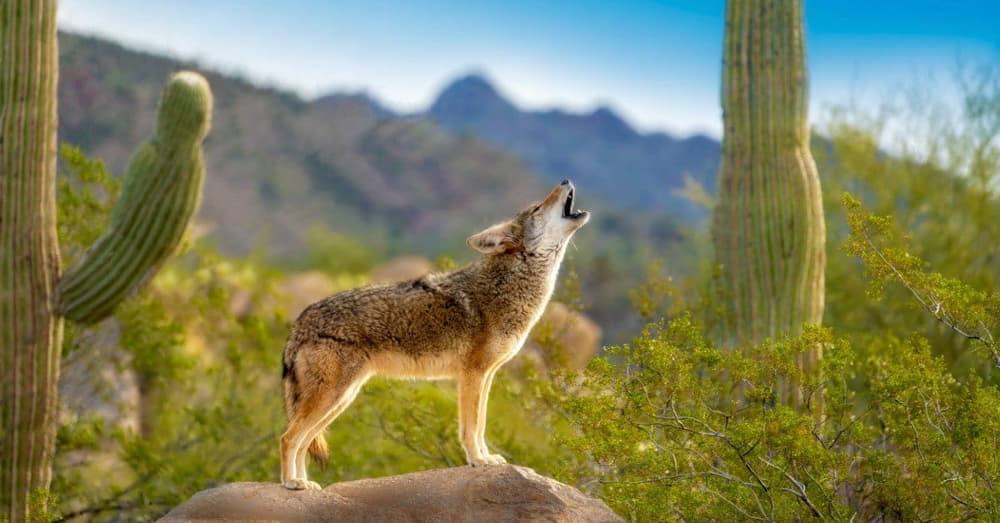Coyotes are a nocturnal predator that is found throughout North and Central America. They are intelligent and cunning animals that can be difficult to hunt. Coyote calling sequence at night is one of their most distinct behaviors compared to other species.
As the sun sets, coyotes begin their vocal performances consisting of eerie and haunting sounds that echo throughout the night. Each coyote’s repertoire has its own meaning and context. These vocalizations serve various purposes, such as communication, territorial marking, and mate attraction. These calls demonstrate the interconnectedness of coyote communities.
For hunters, coyote call sequences yield valuable insights into the nocturnal behavior of this cunning predator. With the availability of electronic calling devices, anyone with a few buttons may become a competent coyote caller. But, if you truly want to improve, you must first grasp what drives coyotes. Understanding what different sounds mean to coyotes will help make your hunting more effective. Keep reading to know more!
Table of Contents
About Coyote Calling Sequence At Night
Coyotes are nocturnal animals, which means they are most active at night. Vocalization is one of their primary forms of communication. They use a variety of howls, yips, barks, and whines to communicate with other coyotes in their pack. Coyotes also have a complex social structure, and vocalizations serve an important part in preserving their hierarchy.
The nighttime coyote calling sequence usually begins with a chorus of high-pitched howls. These howls are meant to locate members of their pack and establish territory boundaries. After the initial howling, coyotes may start making other sounds like yips and barks to communicate more specific information. When a coyote is injured or separated from its pack, it may even emit a distress call, which sounds like a loud wail.
The challenge howl is used by males to assert their dominance and intimidate other coyotes in the area. Besides, the group yip-howl, which is used by entire coyote packs to bond and communicate with each other.

Coyotes may also use vocalizations to protect their territory from potential threats. For example, if a dog or human enters their territory, they may start barking and growling to warn them away. Additionally, coyotes may use vocalizations to attract mates during breeding season.
Coyote vocalizations are unique and distinct from those of other animals. However, some people may mistake coyote calls for those of wolves or dogs. While these vocalizations are similar, they can typically be identified by their pitch, tone, and length.
For example, coyote howls tend to have a higher pitch than wolf howls. Additionally, coyote howls often have a more erratic and varied pitch compared to dog barks or howls. Understanding these differences can help you identify which animal is making the sound.
How To Call Coyotes At Night
Below are 3 steps on how to call a coyotes at night:
- Selecting the right location
- Choosing the right calls
- Using correct calling sequence
Understanding the nighttime coyote call sequence makes it easier for hunters to attract coyotes and capture them. Let’s go over how to call coyotes at night in detail.
Selecting The Right Location
Coyotes are most active in areas with dense brush and vegetation. They also prefer areas with a good water source. When scouting for coyote hunting locations, look for areas that meet these three criteria: Dense brush and vegetation, water source, few human disturbances, and good access to hunting areas.
Hunters should scout for potential hunting locations during the day. This gives you a better understanding of the terrain and helps you identify areas where coyotes are likely to be present. Don’t forget to look for signs of coyote activity such as tracks, scat, and kill sites.
It is important to consider the wind direction when selecting a location. Coyotes have a keen sense of smell and will often avoid areas where they can detect human scent. Choose a location where the wind will be blowing towards you, so your scent will not be carried towards the coyotes.
In addition to scouting on foot, maps and technology can assist you identify the ideal hunting area. Online mapping applications such as Google Maps and OnX Hunt can provide detailed satellite photos of potential hunting sites. You can also use GPS devices to identify sites where you have spotted coyote activity during your scouting visits.
Another useful tool for locating coyotes is a trail camera. Install a trail camera in places where you suspect coyotes are present, and review the footage before heading out for a night of calling. This will provide you with a better understanding of the number and size of coyotes in the region, as well as their travel habits.
Choosing The Right Calls
There are 3 most popular coyote calls available on the market: Howl calls, distress calls and feeding calls. You must understand the different vocalizations of coyotes to determine which call is most appropriate for the situation.

Howl calls are used to imitate the sound of a coyote howling. This is an effective way to locate coyotes in the area, as they will often respond to a howl with their own howls. Distress calls are used to imitate the sound of a coyote in distress. These calls are highly effective, as they trigger a natural response in coyotes to investigate and come to the aid of the distressed animal.
Feeding calls are used to imitate the sound of a coyote feeding. These calls are typically used during the winter months when food sources are scarce and coyotes are more likely to respond.
You should experiment with different calls to see which ones work best in your hunting area. Electronic calls are preferred by some hunters, while mouth calls are preferred by others. It’s a good idea to have both alternatives accessible because some coyotes may respond better to one form of call than the other.
You can also try using a combination of calls to create a more realistic scenario. For example, you can start with a howl call to locate coyotes in the area. Then, you switch to a distress call to pique their curiosity and draw them in.
Using Correct Calling Sequence
Begin your calling sequence by making soft and slow calls. This mimics the behavior of a coyote just beginning to vocalize and does not instantly alert any surrounding coyotes to your presence. Gradually raise the volume and speed of your calls as you proceed through your sequence.
Coyotes are intelligent animals and can quickly become wary of repetitive calls. To keep them interested and engaged, vary your calls throughout your sequence. You can also add in pauses and breaks between calls to make your sequence sound more natural.
Patience is key when it comes to coyote calling at night. It may take some time for coyotes to respond to your calls. So it is important to stay in one location for at least 20-30 minutes before moving on. Coyotes may also circle around to approach your location from a different direction. You need to be aware of your surroundings and be ready to adjust your position if necessary.
Tips And Tricks For Night Hunting
Here are 3 additional tricks that can help increase your success when calling coyote at night:
- Ensure camouflage: Because coyotes have good eyesight, it is critical to blend in as much as possible. You should wear camo clothing and conceal your face with a face mask or face paint.
- Ensure use a red light: Red light does not spook coyotes like white light does. Use a red light to scan the area for any approaching coyotes without alerting them to your presence.
- Ensure be safe: Remember to always practice safety when hunting at night. Let someone know where you will be hunting and always carry a flashlight and first aid kit with you.

